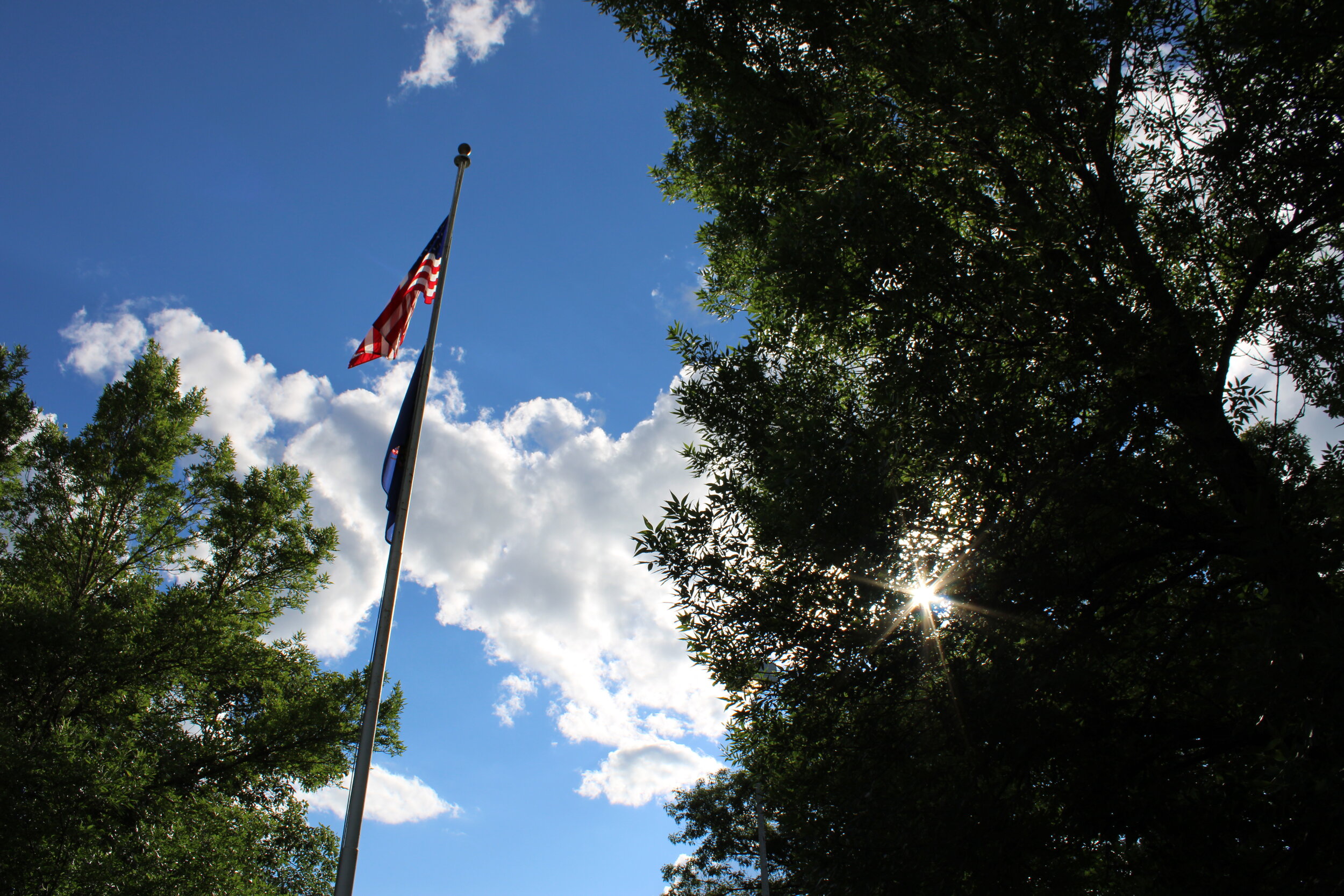Vermont unveils changes to school guidelines
The American flag moves in the breeze on the Woodstock Union High School & Middle School campus in Woodstock, Vermont. (Gareth Henderson Photo)
Just under a month away from the restart of school, the state of Vermont on Tuesday announced some changes to its guidelines for reopening.
The adjustments were based on feedback received from local districts and the latest recommendations from health experts, according to Education Secretary Dan French, who spoke at a Tuesday press conference. He also noted the state’s guidance is still based on Vermont's COVID-19 data remaining favorable to reopening. Currently, Vermont has the lowest caseload of any state in the U.S., as it has for some weeks now.
In one change, the statewide guidance now includes a strong recommendation for in-person instruction for younger students, especially grades K-5. French noted there were strong educational reasons for making this change, as "schools play a critical role in (these students') healthy development." Many Vermont school districts are adopting hybrid learning models that blend in-person and remote learning.
Also announced on Tuesday, the required health-check process has seen some adjustments. Previously, health checks — including a health questionnaire and a temperature check — had to be done daily at the first point of contact, and administered by school personnel. Now the rule is more flexible, to allow parents and students to complete the health questionnaire at the first point of contact, or prior to entering the school building. Also, temperature checks are still required to be administered by school personnel, but they too are now allowed to be done at the first point of contact, or prior to entering the building.
French said the health-check change was spurred by updated CDC guidance, and also by feedback from districts.
"We heard from many districts that it was going to be difficult to implement health checks by school personnel at the first point of contact, especially when we consider the first point of contact is often a school bus," French said. "We think the revisions we're announcing today provide a more doable approach, while also preserving the utility of these screening measures from a safety perspective."
Additionally, the state changed the social distancing requirement for younger students who are less than 10 years old, making the rule 3 to 6 feet, instead of the usual 6 feet. French said this added flexibility is due to scientific evidence continuing to show that children at those younger ages are the least likely to transmit the coronavirus, even in close quarters. The social distancing guideline for older students remains at six feet.
Going forward, French said, the state will review its school reopening guidance at least on a monthly basis, to ensure it is following the latest health recommendations. Education officials will also continue to consider changes based on feedback from school districts.
Gov. Phil Scott said his team will update Vermonters each week about this ongoing work to reopen schools safely. Though concerns continue about reopening amid the pandemic, officials were confident in Vermont's strong contact-tracing program, which has proven itself capable of containing outbreaks.
"We've been building our contact-tracing capacity since March, and we have a robust team that's ready. We can open schools safely," said State Epidemiologist Patsy Kelso. "I've been reassured time and time again with each new case that's been reported, that our containment strategies are working. It's mission-critical to open schools, and we have to try. There may be no safer place to do it than in Vermont."
— Gareth Henderson
